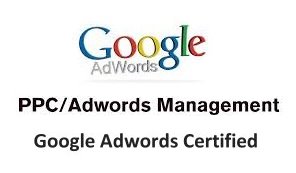
AdWords Campaigns

What is Involved with a Google AdWords (PPC) Campaign?
Google Adwords can help you to obtain that brand recognition you desire by targeting the right audience and selling your products to them. Getting started in Google Adwords is quite simple. The first thing that needs to be done is to go through all the goals and objectives of the campaign. You should set a goal on the kind of money you would wish to spend and the amount you want to get in return.
The next step is to build a list of keywords. You can build your campaign on branded keywords or unbranded keywords. If you decide to target branded keywords, you will specifically target those people who are searching for information which is directly associated with your brand. These keywords are usually meant to attract an audience which is already aware of the existence of your brand. These are visitors who appreciate your brand authority and keep on coming back.
On the other hand, you can launch your campaign and focus on targeting non branded keywords. These are keywords which are related to your services and products but not specific to your brand. These industry terms usually attract users who are looking to gain more information on specific products and services and then get the best offer from the best brand. Targeting these keywords can help you to gain a larger market share and be very competitive online.
You also need to conduct proper traffic measurement. You must measure the success of your campaign by tracking down the results. Get to know how many visitors you get, what they searched for and how long they stayed on particular web pages. This will help you to modify your pages to suit user behavior and preferences. Google Analytics can help you to track down the performance of your campaign.
In order to succeed in PPC, you must come up with well written ads with a high click through rate and conversion rate. Remember that, your position on Google Adwords listing is also determined by the number of visitors who click on your ad. You can end up paying more per click compared to someone whose ad is above yours on Google Adwords listing.
You also need to consider where the ad is taking a user. It is important for a user to be directed to a landing page that is relevant to their search as opposed to the home page. This also affects the conversion rate of your ads.
Pay Per Click (PPC)

What Does Pay Per Click (PPC) Mean?
Pay per click (PPC) is simply paying for every click on an ad that sends web visitors to your web pages. This payment is made to the website vendor who is hosting your advert. In PPC, you are only charged when a web visitor clicks on your advert.
When a visitor clicks on your ad, they are directed to another site where they can purchase the products or services which were advertised. There is software that tracks the number of clicks made on each advert. The advertiser will then pay the website owner or publisher a certain amount based on the clicks made per advert.
The amount you pay per advert will depend on a number of factors. Advertisers usually conduct what is known as bidding on certain keywords. Bidding on keywords will determine the ranking of your ads whenever search results appear. If your ads appear first on most searches, there are higher chances of users clicking on them.
Payments can be made differently depending on the site where your advert is published. There are cases whereby the website owner will receive a set amount for each advert that is clicked. However, there are also cases whereby the website owner only receives payment when sale is made.
The cost of every click can vary significantly depending on the site where your ads are published. You can pay as low as a few cents per ad to a few dollars per ad click. Unfortunately, there are cases whereby people end up paying a lot of money on PPC advertising because of unfair competition.
The software program used in PPC advertising cannot be able to track down the location of each web user before charging. This means that, someone can actually click on your ad continuously and you will end up paying for every click even if it doesn’t amount to any sales. This is commonly referred to as ‘click fraud’ and is the major cause of costly advertising.
If you are planning on running your business well, invest in quality PPC advertising. You need to track the performance of your adverts and ensure that you are only paying for clicks which have given you reasonable returns.
Running a PPC campaign can be rather costly if you do not monitor it consistently. You need to know what you are paying for and why. You can use different tools to track down the performance of your ads and make the necessary changes.
Display Campaigns

What are AdWords Display Campaigns?
In most cases, Adword ads are shown on search engines. The Adwords display campaign is not launched on the search network. In this case, Adword ads are shown on sites which are not search engines. These content network sites are basically used for advertising. Display networks will contain a number of sites which receive high traffic because they target specific niches or visitors.
There is no denying that click through rates on display networks are much lower than on search networks. However, this does not mean that display networks should be ignored altogether. You can decide to launch an Adwords display campaign in order for you to reach out to a more targeted audience and increase your conversion rates.
If you are launching your Adwords display campaign, you have to be very careful about the type of Adword ads you choose. There are different types of Adword ads which you can use of display networks. You can select text ads which you previously used on the search network. Your image ads should be static. You can also go for the cool animations or flash ads which can make your brand visible. Video ads and mobile ads are also great alternatives.
You should also choose carefully the kind of websites you would like your ads to appear in. Do not restrict yourself to websites which are within your industry. However, you can target a specific area or language. There are cases whereby targeting smaller websites can give your ads a better performance.
You will also have to choose the type of content that your ads will appear alongside. In such cases, the ads will appear on sites which have the keywords or content that you earlier specified. This means that, the kind of ads which appear will be based on what the user is reading. In such cases, you will make use of contextual and topic targeting. That is, you will select the kind of topics and content in which your ads should be alongside.
You can also choose to show your ads to specific people regardless of the websites they are on. There are those people who always present a great opportunity to close sales. A good example is some of your previous visitors. This is basically referred to as remarketing. The main purpose of your Adwords display campaign is to ensure your ads are displayed on different sites to help you target your audience better.
Remarketing

How does AdWords ‘Remarketing’ Work?
Google Adwords remarketing is a very valuable product from Google which allows website owners to interact with some of the people who earlier visited their website. When a visitor visits your site but makes no purchase and goes on to another website, you can find ways to get back this visitor by remarketing your brand. Re-engaging customers is likely to boost your conversion rates.
There are a number of tools used in Google Adwords remarketing. You can make use of text, video ads and media files to attract this potential customer again. You can make text, video ads and images to appear on other Google products being used by your potential customer like YouTube, G mail and Google Maps. This information will only be viewed by the customer who previously visited your site.
Setting up your remarketing campaign is quite easy and can be done by any website owner. You will start by signing in to Google Adwords. Go ahead to and use a remarketing tag across all your site pages or to those which you intend to create remarketing lists. The next step should be to create remarketing lists that target your previous visitors. For instance, you can create a remarketing list that saves all the people who visited your homepage. You can have a number of messages to be sent to people who are in this ‘homepage list’.
The next step is to create a specific message which will be targeting your previous visitors. Remember that this message will only be shown to the people in the remarketing list. The idea in Adwords remarketing campaign is to target visitors who previously viewed your website.
You do not have to create a remarketing list for your home page visitors alone. You can also get a remarketing list for other pages like your shopping cart. You are able to get these remarketing lists because the remarketing tag is on all the pages of your website but not limited to the home page.
Whenever visitors who were previously on your site browse on any site in the Google content network, your remarketing text ad or banner ad will be displayed. This will create a lot of exposure to a customer who was earlier interested with some of the services you had to offer. You can later track the results of your banner ad or text ad on Google Analytics. This will help you to structure your campaign properly and get more returns.
Quality Scores

What are AdWords Quality Scores and How do they Work?
Adwords quality scores are metrics which are used to show how relevant certain keywords are when used in an ad. Quality scores are used together with CPC to determine the rank of an ad. The main reason why quality scores are very important is because they show how relevant your advertisement is to the user’s search query.
Quality scores are particularly important to businesses which are running their PPC campaign on a budget. If you are running your campaign on a budget, you would like to get the most out of every click. You would like to bid lower but be able to get the most returns on your investments. You can be able to get this with a high Adword quality score.
Adword quality scores are calculated by Google’s Adwords system for every keyword and they play a very significant role in determining the position of your ad. If you have a high Adwords quality score, then your ad rank will also be high and you will pay less per click. This means that the advertisement will have a high position in search results and yield great returns.
Each of your keywords will be given a quality score by Google. This quality score ranks from 1 to 10 with 1 being the lowest. The quality scores are updated frequently depending on performance. There are various things Google considers when determining quality scores of your Adwords.
First, Google will consider the landing pages of your ads. Are your ads sending users to well optimized landing pages? Adwords which send users to highly optimized landing pages have a high quality score. You should employ the right SEO tactics on all your landing pages in order to get a high quality score.
Google will also find out if your keywords are relevant to the ad. The keywords you use should be related to each other as much as possible. Make sure that each group has an Ad text that is closely related to the keywords you use. In essence, the way you set up your Google Adwords campaign will affect your quality score.
In order to boost your quality scores, make sure you choose ad groups with descriptive ads. They should contain relevant keywords. You can add keywords in your ad groups as frequently as you can. Track the performance using Google Analytics so that you can make changes whenever necessary for your own benefit.
Match Types

What are Google AdWords ‘Match Types’?
Match types are features on Google Adwords which help you to optimize your campaign by targeting the most suitable searchers. Whenever you are adding keywords to your account, you can choose specific match types to these keywords. If you do not apply any match types to the keywords you are bidding on, it defaults to broad match.
When you apply a match type to a certain keyword, your adverts will only be displayed if what the user searches for relates to that match type. Choosing the right match types helps your ads to be triggered depending on what the user is searching for. This can help you save a lot on your PPC campaign. There are different types of match types.
The broad match type, which is a default match type, will make your ad appear whenever a user keys in different variations of the keywords you bid on. This includes plurals, synonyms and other related variations of your keywords. It can give you maximum traffic but the bad thing is that it may lead to a lot of irrelevant searches.
The modified broad match type is more specific than the broad match type. It helps you to get more relevant searches by locking specific keywords. For instance, if you bid on SEO company and lock the word SEO, you will get different variations of the word company. That is, your ad will appear when users search for SEO companies, SEO firms among others.
The phrase match type is used to ensure that your adverts are only triggered when the web visitor enters a search term that is similar to a certain phrase and in the same order. However, the adverts can also be triggered if the search query contains some additional words before or after the phrase.
The exact match type is used to ensure that your adverts are only triggered when the user enters the exact keyword. This will reduce the level of traffic but in turn increase the number of more relevant clicks. This match type has the strongest quality score and click through rate.
The negative match type will ensure that your adverts are not displayed on certain searches. You will simply select this match type if you do not want your ad to appear when a user enters a particular keyword. It is applied by adding a negative sign in front of the keyword. It helps to filter out irrelevant clicks.
Would you like a professional website, or need help with SEO?
Write to us with your project details and we will get back to you shortly.

